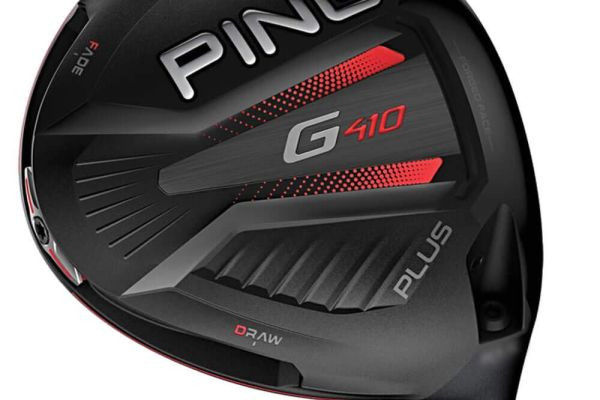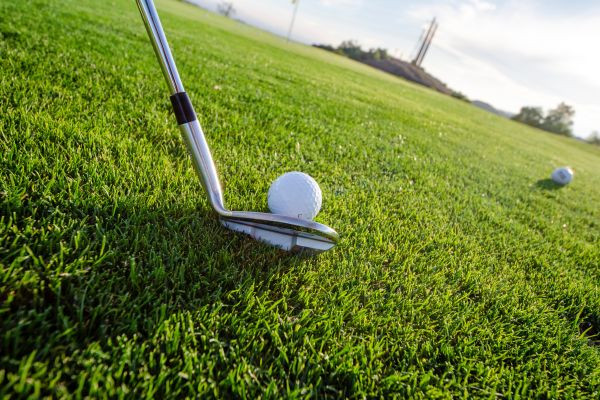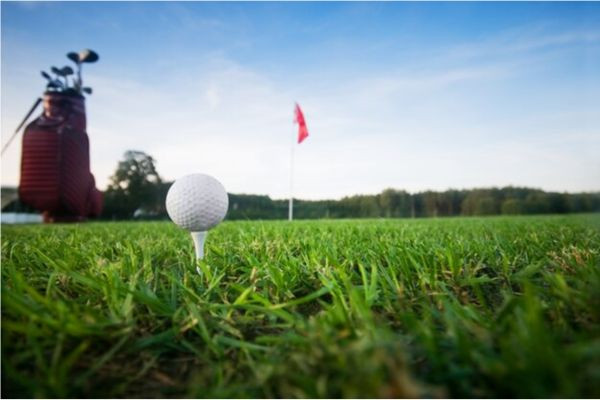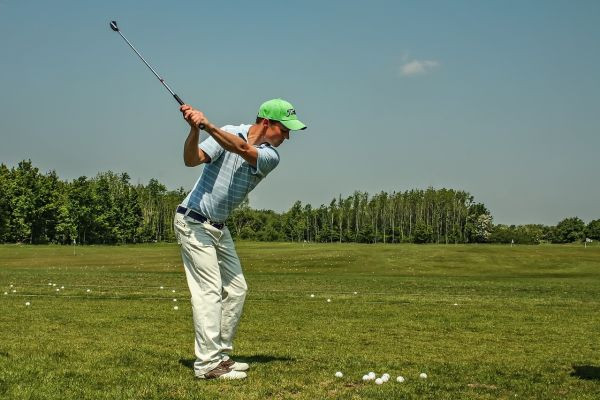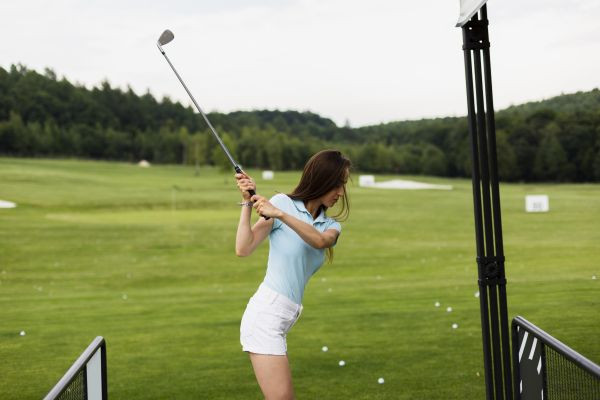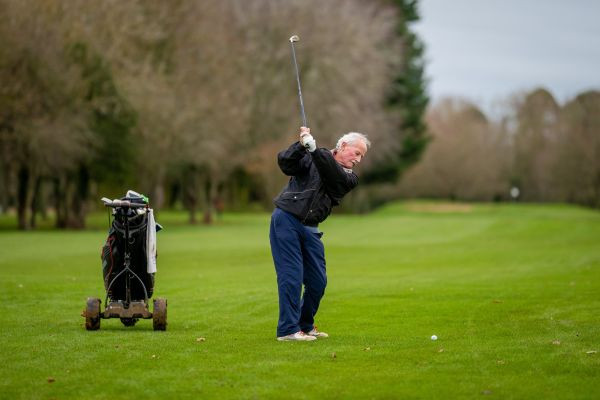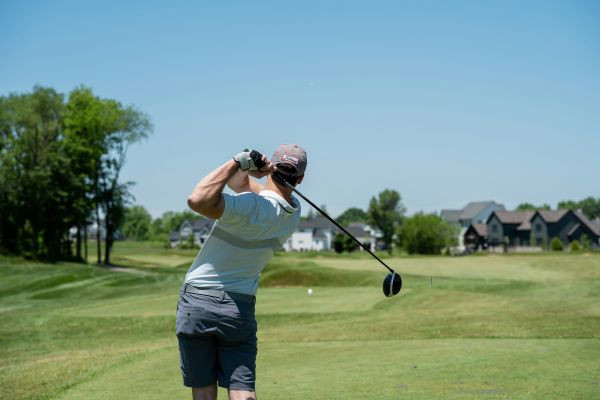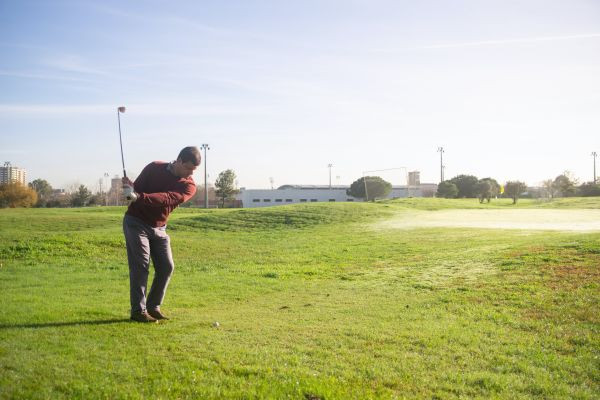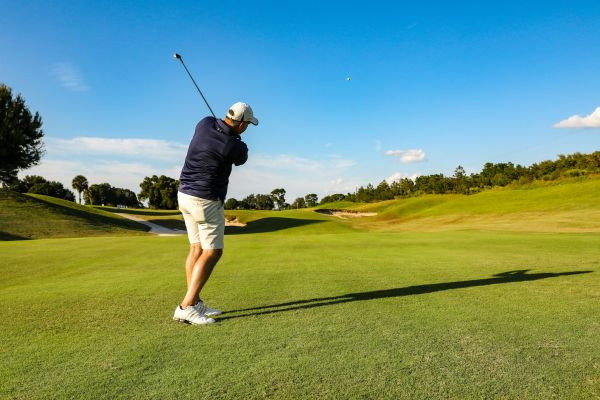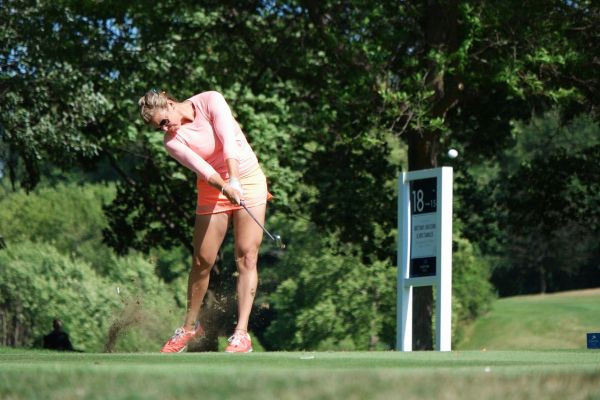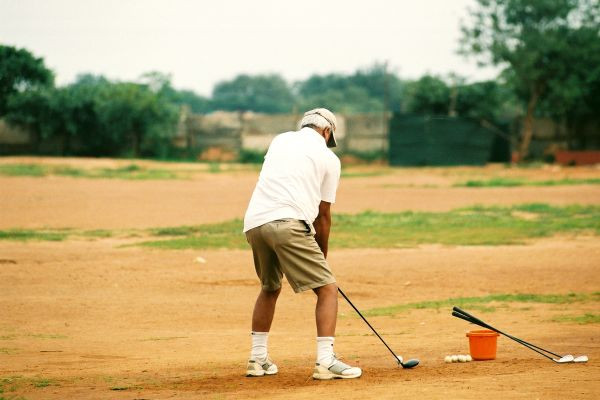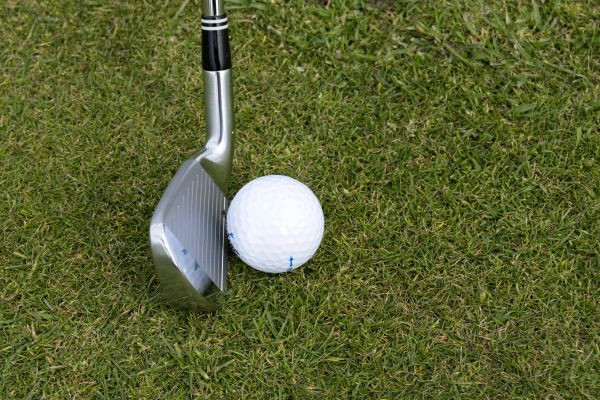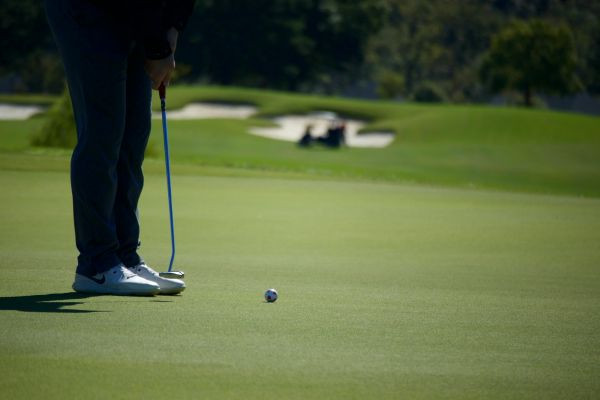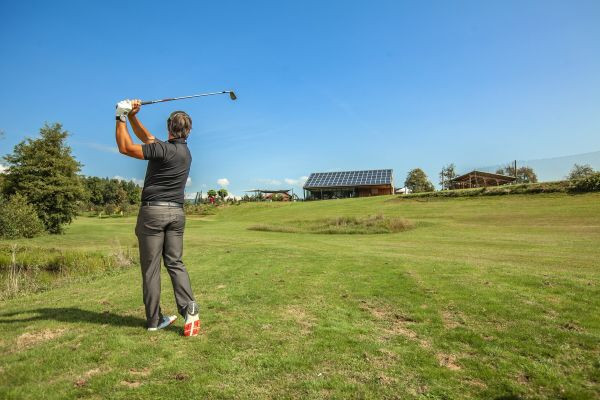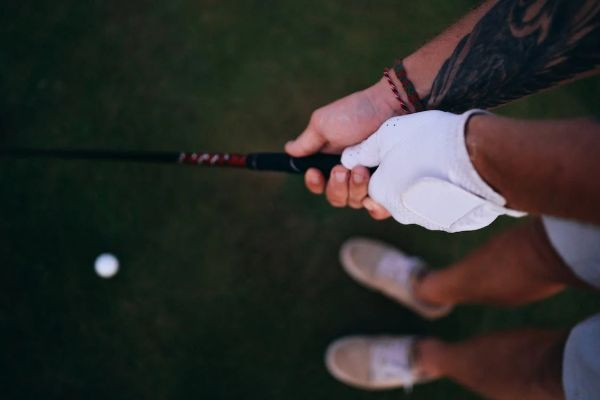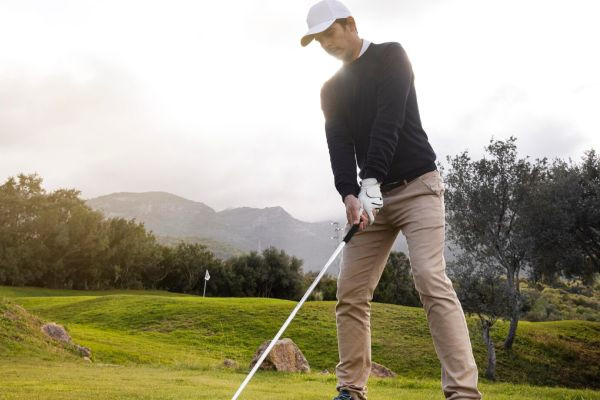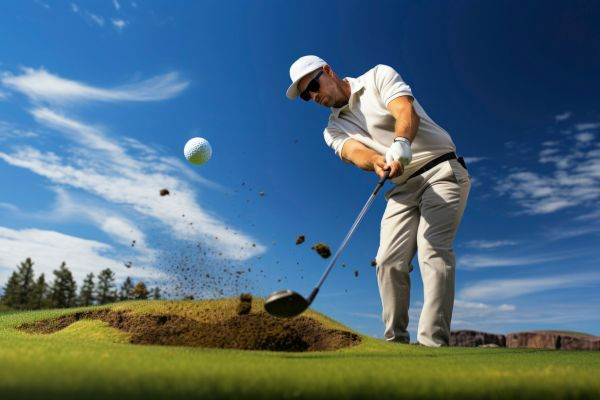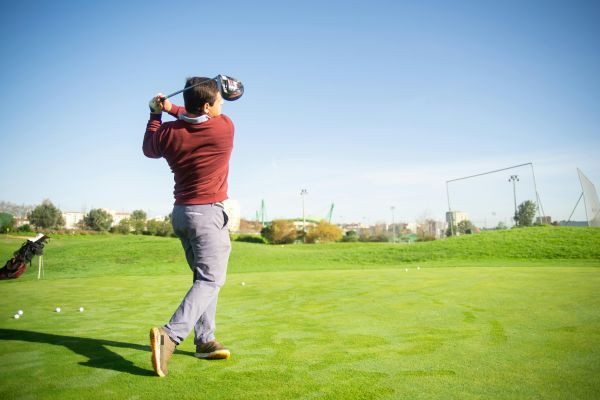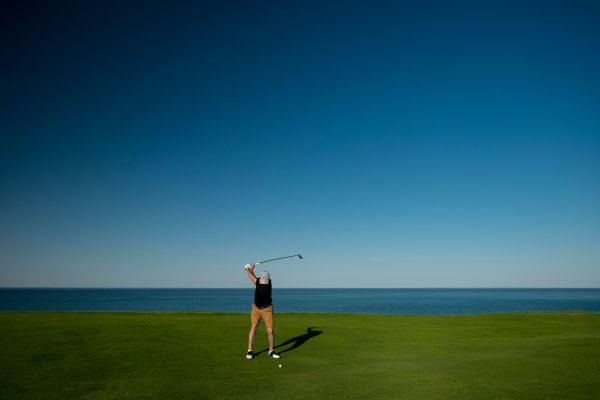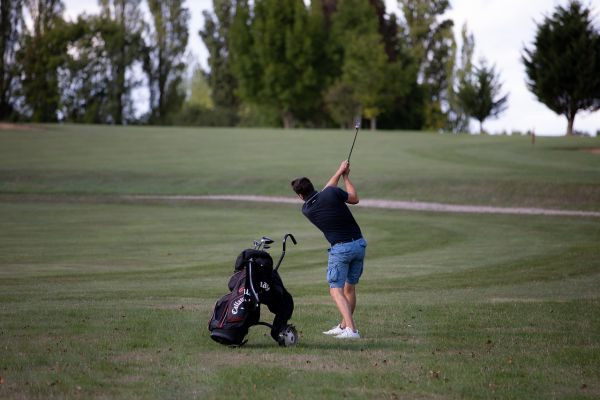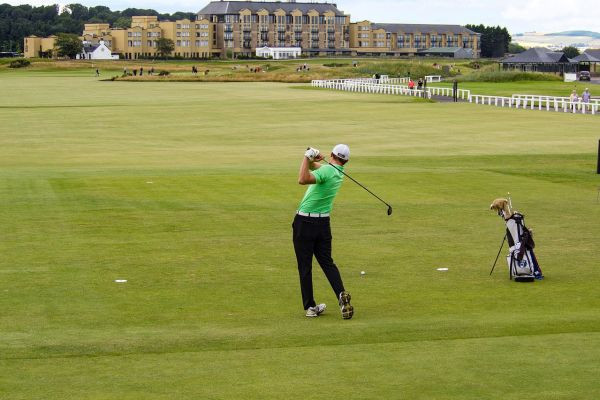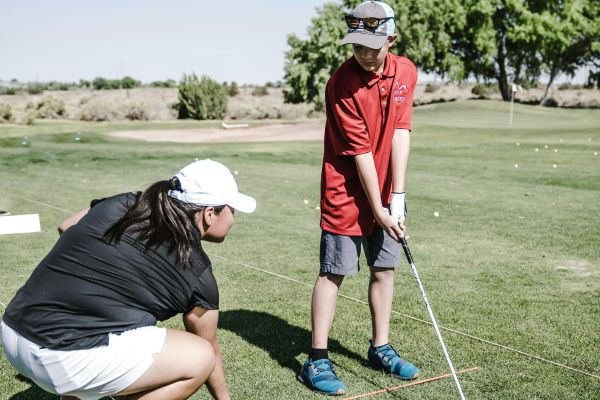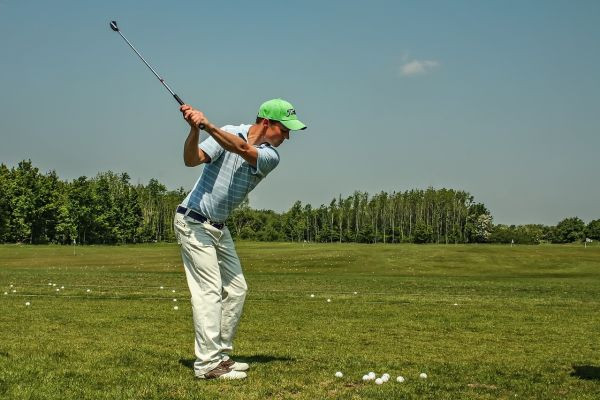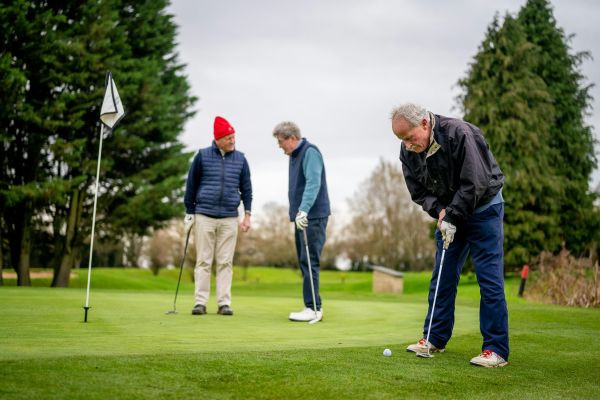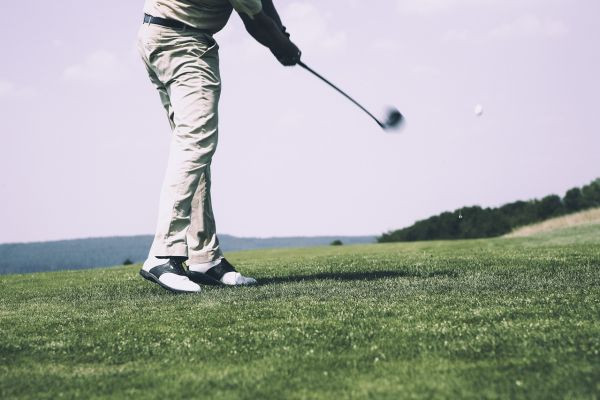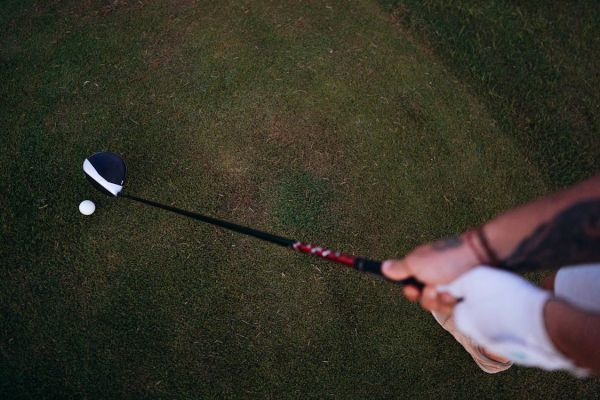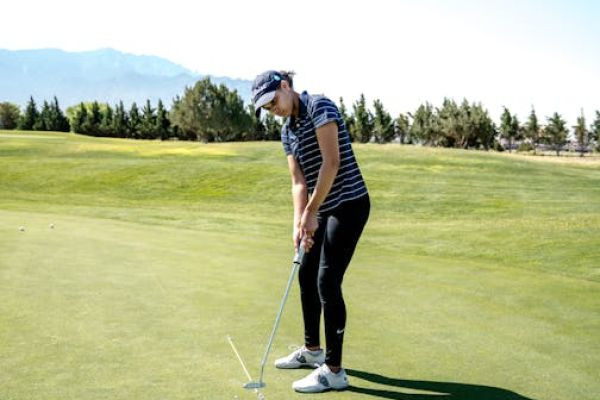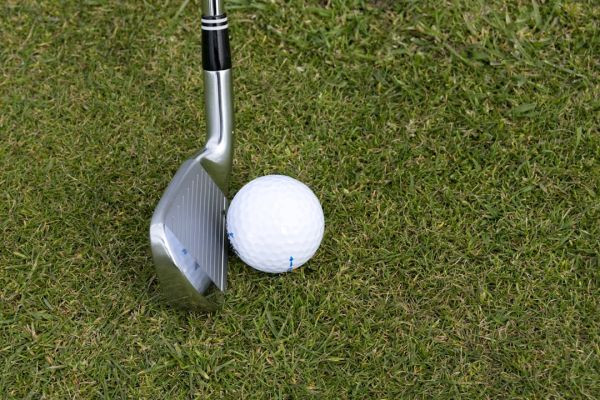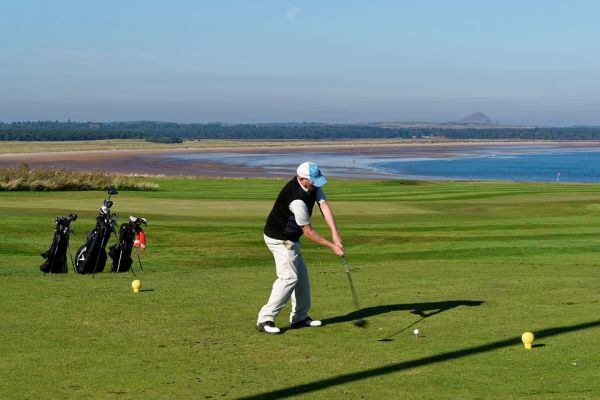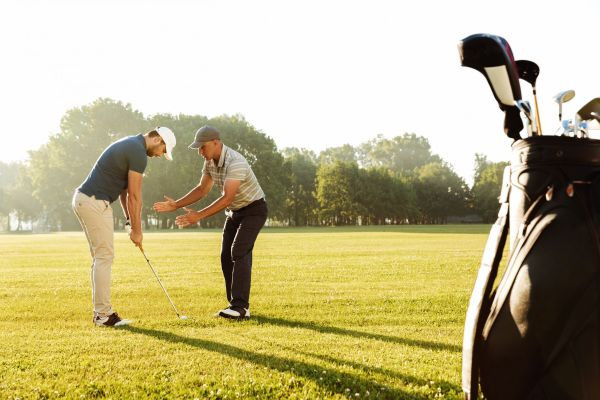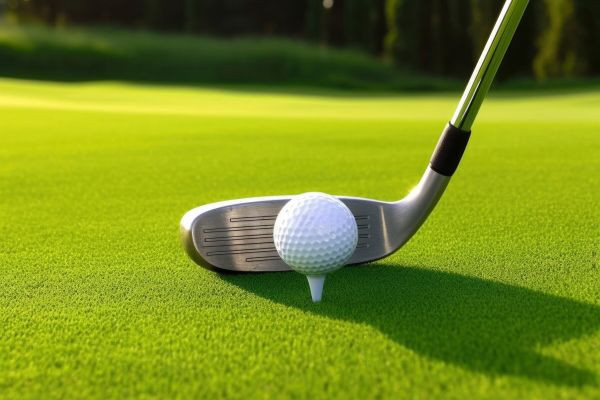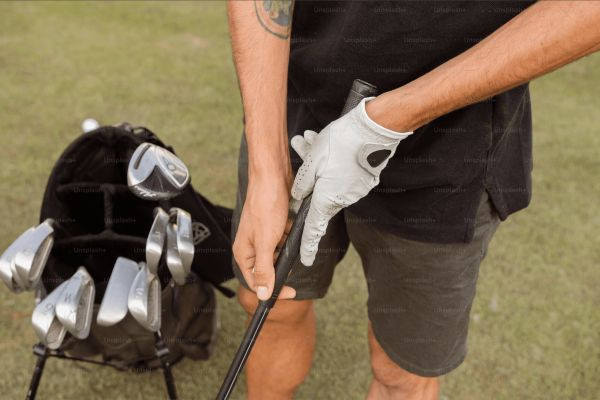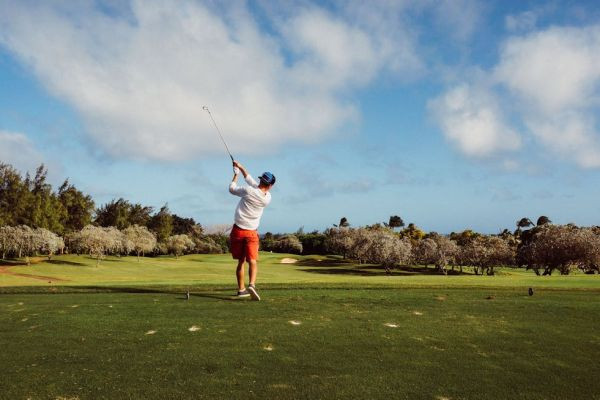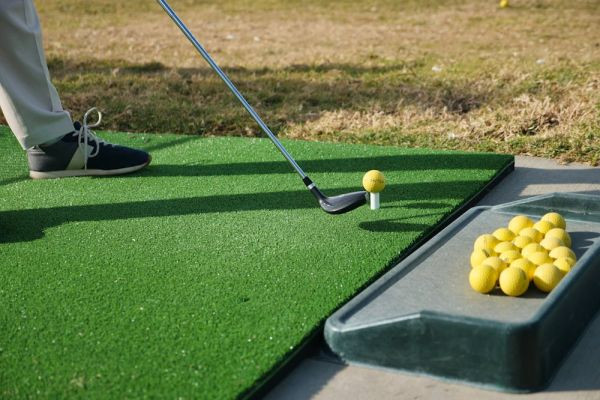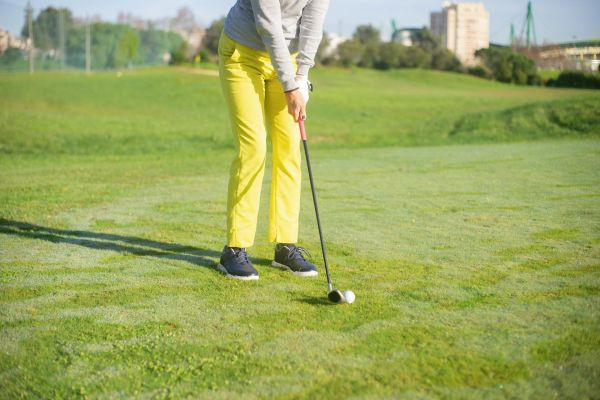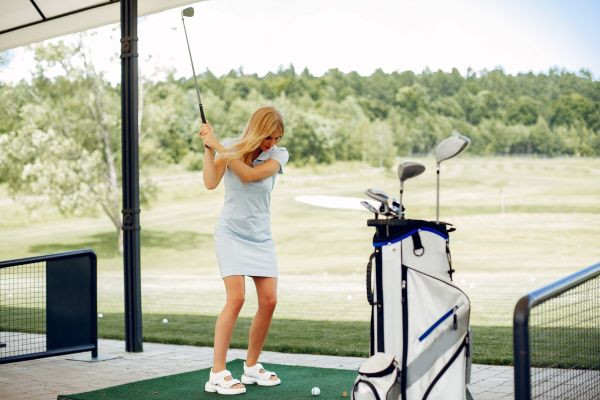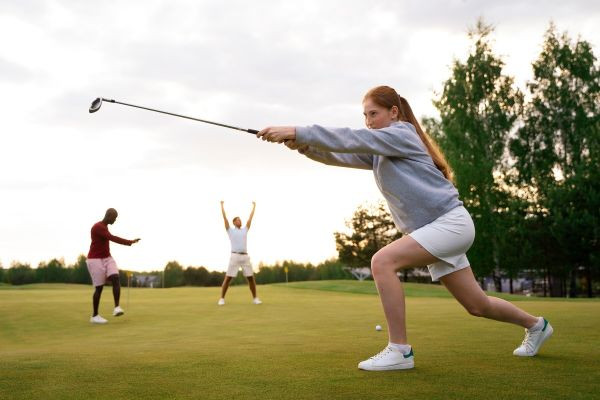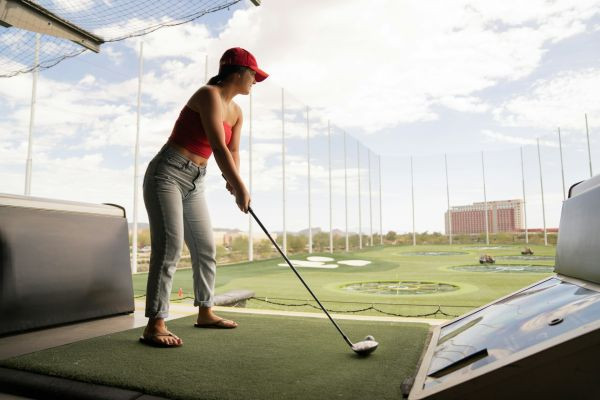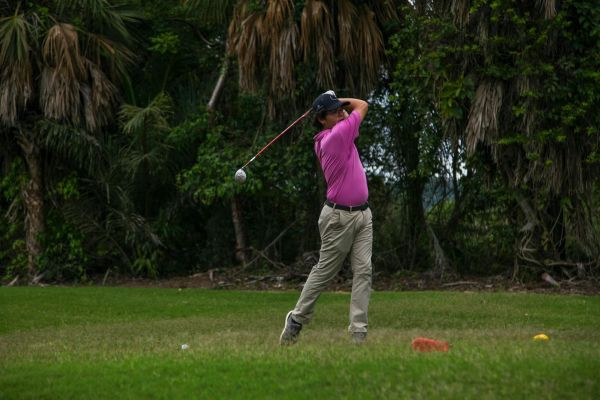Transform Your Golf Setup: How to Achieve Perfect Spine Angle Every Time
Golf, a game of precision and strategy, demands more than just strength and luck. Among the myriad factors influencing your game, the setup stands out for its foundational significance. The perfect sp..

Golf, a game of precision and strategy, demands more than just strength and luck. Among the myriad factors influencing your game, the setup stands out for its foundational significance. The perfect spine angle, often overlooked, is a cornerstone of a powerful and consistent golf swing. Let’s dive into how mastering your spine angle can transform your game.
The Importance of a Perfect Spine Angle
The perfect Spine Angle is crucial in the anatomy of the perfect golf swing. Your basic swing depends on the plane of your golf swing. It is rather easy to hit the ball as close to the hole when you set the plane which is your spine angle.
The spine angle is the axis of rotation that allows you to make a turn of the half-circle with your body on a solid base. When the backswing is started with a stable and level lower body and the spine is tilted over a stable spine angle is created to maintain the desired angle. There is a lack of unnecessary weight shift.
Initiating the lower body for the downswing and the spine angle generated by the 'Hip-rocker' movement before the clubhead impacts the ball will help to push the entire energy from the ground through your lower body, your upper body, arms and then the club. Onceyou have achieved the perfect spine angle you can hit the ball. Thus you will be able to hit the ball with a good distance and precision.
Whether it is clicking the ball off the golf tee or charging with a full stance a golf swing is nothing but the body simply dragging the club through the motions. When you whip your club to strike the ball the resulting high-speed swing travels through the bottom section of your spine.
Every swing will place stress specifically on particular parts of your body including the spine and the back in a golf swing. The perfect spine angle not only contributes to your power and convenience with which you hit but also restricts the excessive motion which causes issues to your lower back, your shoulders and your knees.
The energy produced by your body and the weight applied to a clubhead will be both wasted and lost if your golf swing's angle is improper. In contrast, maintaining an appropriate spine angle can serve as a barrier against spinal damage. Otherwise you might specifically strain your back increasing the risk of creating a herniated disc which compared to non-golfers would require a longer recuperative period for this injury.
Finally in order to develop a high-speed golf swing you need to get all twists and powerful twirls into your golf swing. A correct spine angle will help you distribute the weight from the clubhead through your body and therefore ensure that any discomfort is minimized and not exacerbated.
Understanding the Basics of a Good Golf Stance
The Role of Your Feet
Imagine your feet as the foundation of a building just as a magnificent building requires a good foundation. We require a good stance for a brilliant swing. Make sure you set your legs shoulder-width apart because the stance allows you to become both stable and flexible. This foot positioning helps you distribute your weight evenly throughout the whole swing.
It also helps the swing to become smooth and controlled. Your feet’s alignment also plays a significant role because if they are placed outwards slightly it would help you rotate your hips fully and result in maximum power.
Knee Flex: Finding the Sweet Spot
Knee Flex is an essential thing that is often overlooked. However it is very important to know just how much knee flex will absorb the energy produced from the swing. If your knees are too stiff it would be hard for you to keep the swing on a consistent plane. On the other hand bent knees would reduce the efficiency of the energy transfer making your swing powerless.
There is an ideal knee flex for every golfer. Bend your knees to the extent that it helps you keep the swing balanced and gives you flexibility- at the same time make sure not to bend them so much as to ruin the smoothness of your swing.
The Myth of the Perfect Stance
Getting the “perfect” stance can be quite misleading. This is because creating the illusion of 'the perfect stance' gives rise to the followers of a certain style of standing thus misguiding people. The perfect stance varies for one person to another depending on a person’s body type, flexibility and comfort. Be sure that the perfect stance for you- as for any other player- is that good stance that complements the way you like to swing the club.
Step-by-Step Guide to Achieving the Perfect Spine Angle
1. Assessing Your Current Stance
Begin by standing in your normal golf stance in front of a full-length mirror or using a camera to record your stance from the side. This perspective allows you to see the natural curvature of your spine and how it aligns with your legs and head. Pay close attention to whether your back is arched, rounded, or relatively straight.
Focus specifically on the angle of your spine in relation to the ground. A common misconception is that the spine should be perfectly vertical, but in golf, a slight forward tilt is necessary. Assess how this tilt changes as you simulate a swing.
2. Adjusting Your Spine Angle
Aim for a neutral spine position. This doesn't mean your spine should be perfectly straight but rather that it should maintain its natural curvature without excessive bending or arching. Your head should be up, but relaxed, and your eyes should align with the ball just past the bridge of your nose, ensuring that your neck is an extension of your spine.
Make small adjustments to your stance, experimenting with slightly more bend at the hips or a minor adjustment in how you hold your head. The goal is to find a position where your back feels strong, supported, and capable of rotating without strain.
3. The Role of the Hips
Instead of focusing solely on keeping your back straight, think about engaging your hips. Proper hip rotation is crucial for a powerful and efficient swing. As you practice your swing, concentrate on rotating your hips while keeping your spine angle consistent.
The hips play an important role in supporting a fluid swing. They should rotate freely but controlled, allowing the upper body to stay relaxed and the spine to maintain its angle. This balance between hip rotation and spinal stability is key to a powerful swing.
4. Practice Drills for Perfect Spine Angle
Practice drills that emphasize maintaining your spine angle. For instance, place an alignment stick or a golf club along your spine, extending from the top of your head down your back. Practice swinging while keeping the stick or club in contact with your spine, providing immediate feedback on your ability to maintain the angle.
Incorporate specific drills that help build muscle memory for the correct spine angle. These might include slow-motion swings focusing on maintaining the angle of your spine or using a mirror to provide visual feedback during practice swings.
Engage in exercises that improve your balance and core strength. These exercises support a stable spine angle by enhancing your body's ability to maintain posture and alignment throughout the dynamic motion of a golf swing.
Common Mistakes and How to Avoid Them
1. Too Much Flex
The first sign to recognize is when you have too much flex in both your knees and your spine. You usually will feel "sunk" into your stance and this can limit the efficiency of your swing if not corrected.
Play around with having different amounts of knee and spine flex and see how they alter the dynamic and stability of your stance. One good idea could be to start with being over-flexed and slowly stand up until you feel the "strong" point (neither locked nor rigid) in your legs.
2. Poor Weight Distribution
If you have poor weight distribution it can significantly affect the balance and power of your swing. One good idea could be swinging where your weight can be felt moving from your heels to your toes and find the "halfway" point where you feel your weight evenly across the balls of your feet. Employ drills that involve repeatedly shifting your weight from back to front during your swing.
3. Neglecting Posture
Recognising that good posture is isolating the body as a whole is vital. Your posture and by extension your spine angle will reflect the position of your feet and the angle of your head towards it. Check often that your feet are shoulder-width apart, your shoulders are back and relaxed and your head is positioned so that it is in a neutral position parallel to your spine.
You can continually improve and maintain good posture with regular practice so don't give up! Before taking a swing to have a good posture you need to check your posture mentally from head to toe. By doing this not only do you keep the correct spine but also correct posture has many other great benefits that can help you get better scores.
Practice exercises that help in maintaining posture. To have a strong posture core and back muscles need to be strong along with strong leg muscles. This helps you maintain the right posture and spine while swinging. Yoga and Pilates are an excellent form to increase flexibility and strength and build better posture awareness.
Conclusion
Achieving the perfect spine angle is a journey of self-awareness, practice, and refinement. It’s about understanding your body, your swing, and how the two interact. By focusing on your spine angle, you lay the groundwork for a more powerful, precise, and injury-free golf game. Remember, perfection in golf is not about imitating others but about finding what works best for you.
Frequently Asked Questions (FAQs)
Why is spine angle so important in golf?
The angle of the spine is important because it influences your swing's balance power and consistency. The correct spine angle will ensure that your swing path is maintained optimally and energy transfer is maximized leading to more powerful and accurate shots.
How can I check if my spine angle is correct?
You can check your spine angle by checking your stance and swing to see if it is correct. Watch out from the side by using the mirror or by recording your swing to check your posture. You will be looking for the straight and neutral spine maintaining the angle right from the start until the follow-through.
What’s the best way to practice maintaining my spine angle?
You can practice to maintain your spine angle properly by doing exercises that emphasize maintaining the spine angle. Put striking an alignment stick up against your back dragging it upwards to strike your head as you walk up the target line; it will ensure that your spine remains straight during the golf swing. Along with exercises you can take help of someone close by so that you can check through the camera or reflect the sight for yourself so that you have a visual feedback in case of need.
What should I do if I can’t find the right spine angle?
If there is difficulty for you to find the right spine angle you can book a few consultation sessions with a golf coach or a professional to find the perfect spine angle and they will be able to adjust it to your body type and swing style to finally optimize your spine angle.
Can a perfect spine angle prevent injuries?
The correct spine angle can avoid any kinds of injuries in particular. If you are able to maintain an optimal spine angle then without doubt your posture and weight percentage will be correct. Being so the strain will not fall on your back shoulder or knee reducing golf-related injuries.


